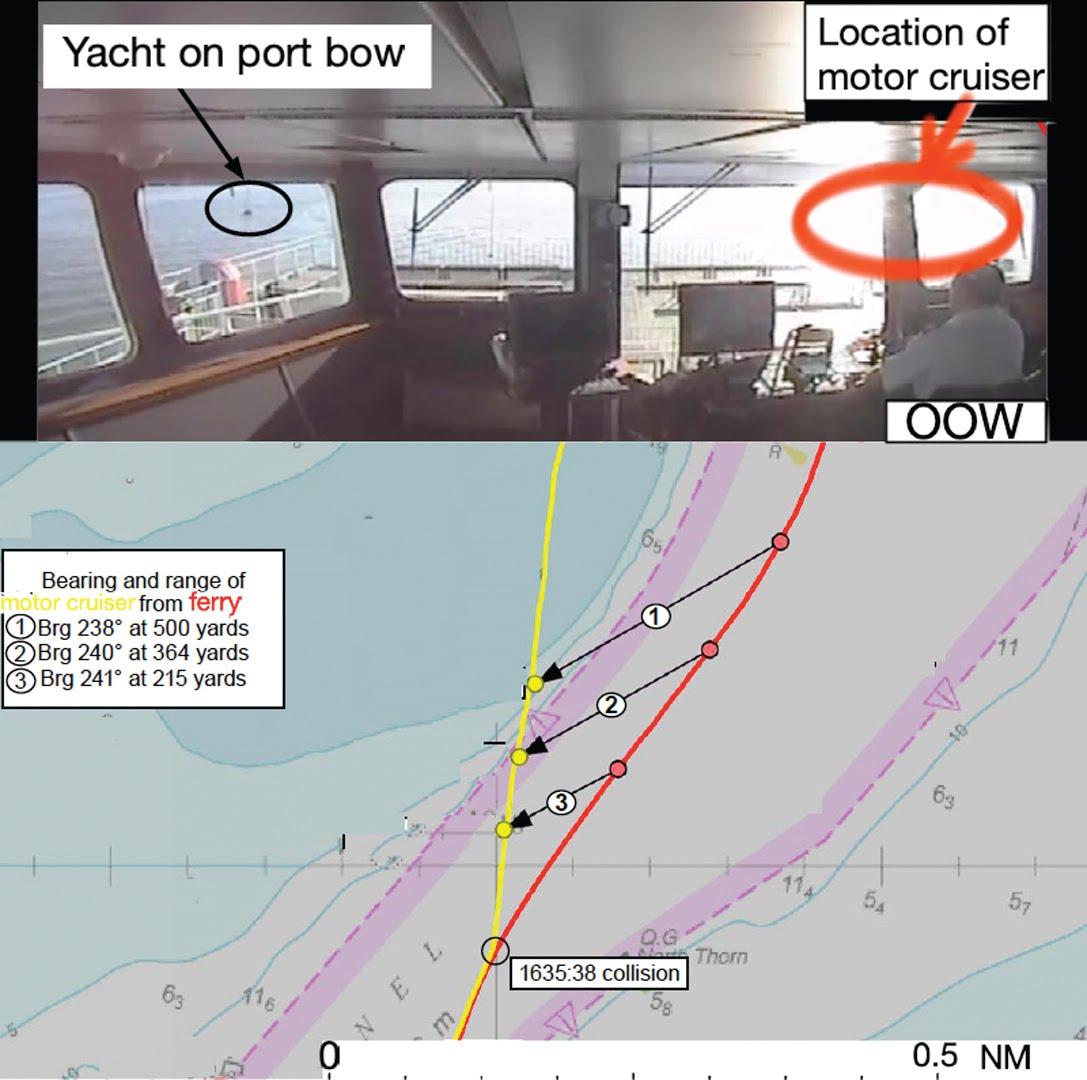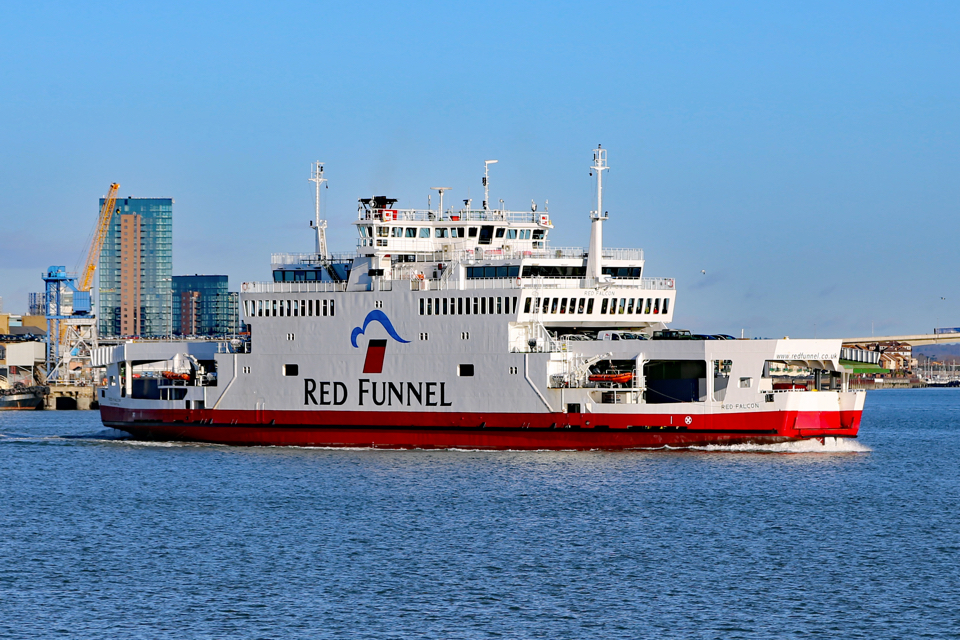There is always a risk of vessels colliding in restricted and congested waters. Not keeping a proper lookout caused ro-ro passenger ferry Red Falcon and motor cruiser Phoenix to collide in the Thorn Channel near Southampton, England, without the former even noticing.
The accident occurred on 29 September 2018. The Marine Accident Investigation Branch (MAIB UK) published a report about the accident in March 2019, which was subsequently discussed in a recent Mars Report (201956). A transcript of what happened:
In the late afternoon, in good weather and visibility, the officer of the watch (OOW) of the ferry Red Falcon steadied the vessel in the channel on an outbound heading of about 216 degrees. The bright sun was now about 25 degrees off the starboard bow with significant glare reflecting off the water.
The master and the OOW, both of whom remained seated, were aware of a yacht on the port bow. They decided to delay a planned alteration to port until the yacht was sufficiently clear of the ferry. Once the yacht was clear, and within seconds of the ferry turning to port, the ferry collided with a motor cruiser that was crossing from starboard to port. The motor cruiser was pinned against the ferry’s starboard bow for several seconds during which time it was pushed over to an angle of approximately forty degrees.

The bridge team on the ferry were unaware of the collision and continued to turn the vessel to port. Several of the passengers who had witnessed the collision from an upper deck alerted the onboard service manager. The service manager went to the bridge and relayed the passengers’ reports to the master. The bridge team felt sure that the ferry had not been involved in a collision and, as the ferry was already committed to entering a river with a strong tidal stream, decided to continue into port without stopping.
Once at berth, the bridge team reviewed the ferry’s CCTV recordings where footage of the collision was seen. A check for hull damage found marks and debris on the ship’s forward belting.
Report Findings
Some of the official report’s findings included:
- The ferry’s bridge team were focused on a yacht off the port bow, and the sun’s glare on the starboard bow made the motor cruiser very difficult to see.
- The effectiveness of the lookout on the ferry’s bridge was reduced because the bridge team remained seated throughout the vessel’s transit and they did not lower the bridge window sun screens.
- From their seated positions, the bridge team could not monitor radar targets or check the blind arcs created by the bridge’s window frames.
- The motor cruiser’s owner did not see the ferry.
Preventative Measures
- Never underestimate the effects of remaining seated while navigating a vessel in restricted and congested waters.
- Keeping a good lookout is a basic navigation technique that is often overlooked.
The owner of the Red Falcon, the Southampton Isle of Wight and South of England Royal Mail Steam Packet Company Limited, has completed its own investigation report, which made recommendations connected with bridge manning, bridge watchkeeping procedures, the use of window blinds and the positioning of radar displays, which are intended to improve navigational watchkeeping practices. The company has also issued a circular to all staff warning of the dangers of repetitive tasks and a fleet-wide letter regarding the conduct of navigation.
Mars Reports
This accident was covered in the Mars Reports, originally published as Mars 201956, that are part of Report Number 323. A selection of this Report has also been published in SWZ|Maritime’s October issue. The Mars Reports are also published on SWZ|Maritime’s website to help prevent maritime accidents.
More reports are needed to keep the scheme interesting and informative. All reports are read only by the Mars coordinator and are treated in the strictest confidence. To submit a report, please use the Mars report form.
Picture (top) by Geni.








